An unseen risk in space travel
The wonders of space travel captivate many astronauts. They see the stars, the moon, and the Earth, but what they don't see is the radiation they are exposed to in space.
| |
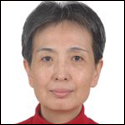 |
| |
Ya Wang |
| |
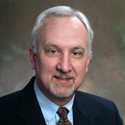 |
| |
Paul Doetsch |
One type of radiation exposure in space is from high-energy charged (HZE) particles, which are known to cause complex damage in DNA and to elicit a broader stress response by affected cells and tissues. Now Emory and Medical College of Georgia (MCG) researchers will study how this radiation type may induce lung cancer.
The National Aeronautics and Space Administration (NASA) awarded researchers from Winship Cancer Institute and MCG $7.6 million to establish a NASA Specialized Center of Research (NSCOR). Ya Wang and Paul Doetsch (both at Winship Cancer Institute) are director and associate director, respectively, of the NSCOR at Emory.
No epidemiologic data for human exposure to HZE particles exists, but some estimates have been made studying uranium miners and Japanese atomic bomb survivors, Wang says. Animal experiments show that HZE particles induce more tumors than other forms of radiation. Since lung cancer is a leading form of cancer, astronauts are expected to be at greater risk than the general public. Emory's NSCOR will study how the body's stress response to HZE particles increases the risk of cancer.
Read more about this research, NASA's space radiation program, and NASA's description of
Wang's research.
Top
New express clinic offers free
care for employees
| |
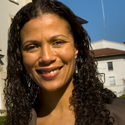 |
| |
Paula DesRoches |
As announced last month in Emory's HR newsletter, Emory now has a free express clinic for all employees. The clinic is staffed by four nurse practitioners, including director Paula DesRoches, and two physical therapists and is located at both Emory University Hospital (EUH) and EUH Midtown, with a third location for physical therapy at the Houston Building at Wesley Woods. Physicians Donald Davis (primary care) and Bruce Ribner (infectious disease) serve as medical and assistant medical director, respectively.
How did the Emory Express Care Clinic get started? It was piloted two years ago to a limited group of users for feasibility testing and then brought online to successively larger units of employees as time went on, says DesRoches.
In addition to her relatively new role as head of the clinic, she directs occupational injury management, the office that handles medical and case management for occupational accidents for all Emory employees. "We already had nurse practitioners and physical therapists in place for treating employees with workplace-related injury, so we thought we'd start something small with existing staff and see how it went."
DesRoches was part of a committee led by Theresa Milazzo in Human Resources that included representatives from both university and health care leadership. "The committee's goal was to make employee health at Emory more comprehensive," says DesRoches. An express clinic was one way to do that.
Locations
Emory University Hospital
Sub-basement level, room HB53
M-F, 8 a.m. to 3 p.m. by appt. only
404-686-8587
Emory University Hospital Midtown
Orr Building, 6th floor
M-F, 8 a.m. to 3 p.m. by appt. only
404-686-2352 |
|
In addition to obvious benefits to users, such as geographic convenience, enhanced access to care, and earlier intervention in illness, workplace clinics can have other pluses, increasing employee retention and decreasing both absenteeism and "presenteeism," a term describing the concept of working while sick, which has negative consequences for workers and co-workers alike.
The clinic offers free care for common illnesses (colds, flu, sinus problems, eye infections, ear pain, acute muscle pain, and the like) and does not include care for chronic illnesses like diabetes or hypertension. "We write prescriptions and offer limited physical therapy services," says DesRoches.
To use the clinic's services, employees should schedule an appointment. Acute occupational accidents and exposures remain a priority for DesRoches and her staff and take precedence over express care appointments, which may have to be rescheduled.
Top
NIH awards $10 million
to advance flu vaccine patch
The NIH recently awarded $10 million to Emory, Georgia Tech, and PATH (a Seattle-based nonprofit) to further develop a flu vaccine patch containing tiny microneedles that dissolve into the skin.
The five-year grant will be used to address technical issues and advance the patch through a phase 1 clinical trial. It also will be used to compare the patch's effectiveness with that of traditional intramuscular injection of flu vaccine. In animals, vaccination with dissolving microneedles has been shown to provide better immune protection than vaccination with hypodermic needles.
| |
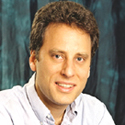 |
| |
Mark Prausnitz |
| |
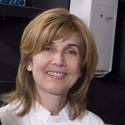 |
| |
Ioanna Skountzou |
"We have seen evidence that the vaccine works better when administered to the skin because of the plethora of antigen-presenting cells that reside there," says Ioanna Skountzou (microbiology and immunology), co-principal investigator for the project. "This study will allow us to determine how we can optimize the vaccine to take advantage of those cells that are important in generating the body's immune response."
The microneedles on the patches penetrate only the outer layers of skin. Their small size would allow vaccines to be administered without pain—and could allow people to apply the patches themselves.
"Our goal is to make these patches suitable for self-administration, so that anybody could take a patch out of an envelope, put it on, and have it work with high reliability," says Mark Prausnitz (biomedical engineering), the project's PI. Read more.
Top
Clearing obstacles to research
| |
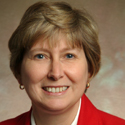 |
| |
Trish Haugaard |
If there's an assignment in the medical school that calls for clearing obstacles to keep research moving forward, Trish Haugaard is likely to be involved. A behind-the-scenes facilitator, the school's assistant dean for research administration is a go-to person for researchers and research administrators. She takes strategic ideas of the school's three research deans (Ray Dingledine, Carolyn Meltzer, and Jeff Lennox) and helps put them into practice. She serves to "keep noise off the deans' radar," fixing small problems before they turn into big ones. And for big problems that do materialize, she's an on-call consultant, jumping part-time into trouble spots as the need arises to help “sort things out” and then "disappear" once her work is done.
Haugaard has a team of three (associate director Darryl Barr, financial analyst Sherie West, and project coordinator Kelly Shaw) and a varied roster of current projects. These include working with faculty researchers at the Atlanta VA Medical Center to smooth the process for obtaining and carrying out research grants. "VA rules and Emory rules often collide, with the result that the researchers run into one brick wall after another," she says. "We're determining which speed bumps are inherent to working with a federal institution and which are ones we put there and thus can change."
• Woodruff Leadership Academy alumna
• Assistant Dean for Research Admin, Emory School of Medicine
• Several management positions, including Senior Clinical Administrator and Vice Chair for Admin, Dept of Psychiatry and Behavioral Sciences, Emory
• Moved to Atlanta when her husband was accepted into Emory Law School
• Payroll Account Clerk, University of Iowa
• BA, Wayne State College, Wayne, Nebraska |
|
Projects also include working with Emory Healthcare CNO Susan Grant and Emory HR VP Peter Barnes to harmonize job titles, training, and credentialing for staff in clinical trials; starting an oversight committee for research on human embryonic stem cells; and launching Emory Commons, a website aggregating information that will support researchers.
Haugaard and her team support the medical school's nine research service core labs, helping them operate like mini-businesses by handling services such as billing, rate setting, and equipment purchasing.
Haugaard also keeps researchers apprised of new grant opportunities, particularly those outside of NIH, and new rules about proper conduct of research—from restrictions on how to spend money to safety and ethical issues. Once a month, she convenes a meeting attended by more than 100 administrators and researchers where she provides updates on regulations and processes in place to help ensure compliance.
Like the research landscape itself, Haugaard's duties are never routine and remain continually in flux. She likes it that way. "My job is hard to describe," she says, "but that's not a bad thing. The more proactive we can be and address issues behind the scenes, the more we make it possible for researchers to focus on their research."
Top
Top of the blog to ya
 Since 2009 Emory Health Now, the Woodruff Health Sciences Center's blog, has been pumping out stories of discovery, education, and clinical care. Last year the blog had more than 20,000 hits. So what did people find interesting? Here are the top five most-viewed blog posts for 2010: Since 2009 Emory Health Now, the Woodruff Health Sciences Center's blog, has been pumping out stories of discovery, education, and clinical care. Last year the blog had more than 20,000 hits. So what did people find interesting? Here are the top five most-viewed blog posts for 2010:
1. Shedding light on the vitamin D-Parkinson's connection—Neurologist Marian Evatt's clinical trial on the effects of vitamin D supplementation on patients with Parkinson's disease.
2. Two birds with one stone in treatment of Alzheimer's—Neurologists Allan Levey and Jim Lah's idea for a drug to treat Alzheimer's disease as well neurodegeneration.
3. A new class of brain-protecting drugs—Pathologist Keqiang Ye's investigations of substances that can mimic growth factor BDNF.
4. Reassuring news on viral immunity + HIV vaccine—A platform for an HIV vaccine developed by Yerkes scientists may be able to avoid problems encountered with another HIV vaccine.
5. NIH director visits Emory—Francis Collins paid a daylong visit to Emory's WHSC.
Top
Two new doctoral programs
to be offered next fall
| |
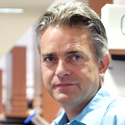 |
| |
Erwin Van Meir |
| |
|
| |
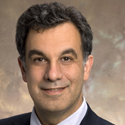 |
| |
Joel Saltz |
| |
|
Emory will offer two new doctoral programs in fall 2011, one in cancer biology and the other in biomedical informatics.
The interdisciplinary cancer biology program will allow students to tailor their training, addressing basic science areas in cancer or clinical aspects of cancer therapy and drug discovery, says the program's founding director, Erwin Van Meir in the Winship Cancer Institute. Read more.
The biomedical informatics program will address use of information systems to improve care of patients, improve performance of health care systems, and accelerate progress of biomedical research, says Joel Saltz, director of the Emory Center for Comprehensive Informatics. Emory also is planning a new biomedical informatics department. Read more.
Top |
|
 |
|
From the
Interim EVPHA
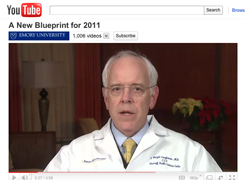 |
| Wright Caughman |
Watch the video above, or read the transcript below.
A new blueprint for 2011
Hello and happy new year! I hope you're as optimistic about the coming year as I am. I believe the Woodruff Health Sciences Center will save and improve more lives, pioneer more discoveries, and nurture more future medical professionals in 2011 than ever before. I'm confident we can enhance the already outstanding delivery of our missions because we have a new blueprint in place to guide us.
This past November, our trustees approved a new strategic positioning document designed to guide and evaluate our continued growth and development. We determined that, in order to be an internationally recognized destination health sciences center and to provide academic health sciences at its best, several key components have to be in place:
• First, we must have a highly successful research program.
• Second, we must continue to have innovative health education programs.
• Third, we must attract the best and brightest faculty, staff, and students.
• Fourth, we must develop and sustain facilities and technology that support innovation.
• Fifth, we must continue to develop strong institutional partners.
• Sixth, we must raise funds to support our missions.
• And finally, we must have a robust health care system.
When these elements come together in a synergistic, interdependent way, success in one area enhances success in another—leading to opportunities for distinction and enhanced delivery of our missions. The positioning document establishes a set of evaluation criteria by which we will determine the viability of strategic opportunities:
• First, does the opportunity support essential investments in our core assets and programs?
• Second, does it expand our research, education, and care transformation initiatives?
• Third, does it advance the Emory brand and culture?
• Fourth, does it generate financial sustainability?
• Fifth, does the opportunity strengthen our competitive position?
• Sixth, does it offer opportunities for our faculty, staff, and students?
• Finally, does it provide flexibility to adjust to the uncertain external environment we face?
We applied these criteria to an examination of several strategic options and determined that investment in core campus health care facilities and programs on Clifton Road and in Midtown would be the most effective way to further build the robustness of our health sciences center. Recent investments in education and research have helped us make great strides, and our evaluation criteria show that it is time now to invest resources in our core health care delivery facilities.
In addition, we will continue to actively explore partnerships and opportunities for providing better health care, advancing research, and enhancing education in strategic regions of the metropolitan area.
Of course, this is just the briefest overview of a comprehensive and thoughtful document which many faculty, staff, and trustees had a hand in shaping. I look forward to sharing more details with you during my state of the Woodruff Health Sciences Center address next month.
Throughout our history, we have created better models of patient care that lead to better outcomes, safety, and service. We've pioneered research that translates into better care and new and better treatments for formerly incurable diseases. And we've prepared future generations of health care providers to transform health and healing. With our new vision to guide us, we will expand upon that extraordinary work in the future. Thank you.
Please let me know your thoughts and suggestions at evphafeedback@emory.edu.
In brief
Emory joins clinical trials network for treating drug abuse
 |
| Carlos del Rio is principal investigator of the NIDA CTN. |
Emory researchers recently joined the National Institute on Drug Abuse (NIDA) Clinical Trials Network (CTN), which works to improve substance abuse treatment through partnerships between researchers and treatment providers.
Emory was selected because of its investigators’ experience in working with HIV-infected crack cocaine users. Emory researchers’ first study as part of the CTN will test an intervention to retain HIV-infected substance abusers in care, with the goal of decreasing their viral load as well as HIV transmission. Read more.
No more styrofoam
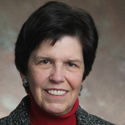 |
| Lynne Ometer |
According to Lynne Ometer, director of food and nutrition services for Emory's hospitals, efforts to "go green" in food services are not taken very seriously by consumers if your operation still uses styrofoam takeout containers. Emory Healthcare recently substituted compostable containers for all its styrofoam in its cafeterias. Made from sugarcane, the new containers readily break down into a soil compost used in landscaping and gardening and, unlike styrofoam, are microwave-safe.
Notable
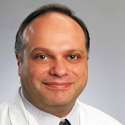 |
|
| Bassel El-Rayes |
|
| |
|
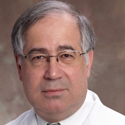 |
|
| Ira Horowitz |
|
| |
|
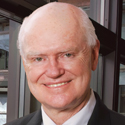 |
|
| Thomas Lawley |
|
| |
|
 |
|
| Joe Quimby |
|
| |
|
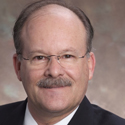 |
|
| Winfield Sale |
|
Bassel El-Rayes (hem-onc) has been named medical director of the Clinical Trials Office of Winship Cancer Institute. Read more.
Ira Horowitz is interim chair of gyn-obstetrics in the medical school following the resignation of Sarah Berga from this post.
Medical school Dean Thomas Lawley became chair of the Board of Directors of the Association of American Medical Colleges in November. Read more.
Joe Quimby has been appointed assistant VP for health sciences communications for the WHSC. Read more.
Winfield Sale is interim chair of cell biology in the medical school following the departure of Barry Shur, who is founding dean of the graduate school at University of Colorado, Denver.
Events
Feb. 2: Second Annual Academic & Industry Intersection Conference. 11:30 a.m. at Emory Hotel & Conference Center. More info.
Feb. 4: Georgia Nursing Summit on the IOM's report on the future of nursing, 7:30 a.m. at Loudermilk Center. More info.
Feb. 24: 2011 State-of-the-WHSC address. 4:30 p.m. WHSCAB auditorium. Simulcast to Emory Johns Creek, Emory University Orthopaedics & Spine Hospital, and VA Medical Center. Reception to follow. Separate presentations at Emory University Hospital Midtown on March 1 and at Grady on March 8. |

